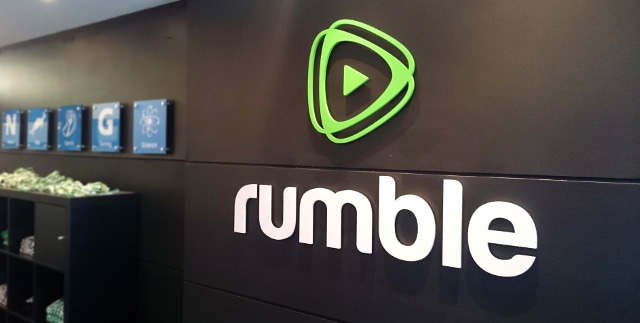Since YouTube started taking over the video content space, the Internet has only gotten noisier. Between scrolling through your Facebook timeline, getting baited into an Upworthy post and checking your friend’s Snapchat, our always-on culture means that it’s difficult for publishers to know what content is most effective to reach their audience — and for content creators to actually make money off of their videos, which are easily reposted by others.
Chris Pavlovski understands the struggle. He’s been working in the video space since 2001 — starting when he was 16, through a website called Jokeroo — and as shareable video content got more popular, he noticed that video content creators were complaining that they weren’t getting as much revenue as they felt that they deserved just from YouTube.
That’s why, in 2013, Pavlovski founded Rumble.com. The site lets users host, share and create channels to be distributed across the Internet (including YouTube) from their centralized platform. With board members including co-founders of Vimeo and CollegeHumor, Rumble has a breadth of experience on its team. Already, Rumble.com boasts partners like Yahoo!, MSN, and Good Morning America, and Pavlovski says it is easier for content creators to make money using his platform.
“A lot of creators make at least $10,000 off 10 or 20 videos,” Pavlovski said. He said that depending on the platform content creators can make between $1 and $20 per 1,000 views (for comparison, YouTube users typically make 50 cents to $1 per 1,000 views). “So if you’ve got content on YouTube, we’ll take that and put it on AOL, the Today Show, Good Morning America, and your gains and views will be so much bigger outside of YouTube.”
As the immensity of YouTube makes it impossible to be managed content-wise, Rumble fills a gap in the video sharing industry with what Pavlovski calls their ‘secret sauce’: Rumble Rank. This algorithm basically allows them to sort through what content is ‘good’ or ‘bad’ — comparable to the way PageRank evaluates which web pages should be in the top search results — to help media companies easily find highly shareable content. “We decide which videos are highly shareable, and which videos to license and manage, and a lot of our partners which rely on us for content can’t do that.”
Besides compensating content creators, Pavloski said what distinguishes Rumble’s service is the fact that publishers of videos on Rumble also get a cut of revenue garnered from video distribution, even if publishers are using their own embedded players. They key for the company is to be agnostic.
“We’ve created a management layer for the creator and because we manage it, we have a right to allow the publisher to get in on the process of revenue so they can distribute the video and get a cut,” Pavlovski explained. “We have that edge on publishers.” Regardless of what player the publishers users, they take 50 per cent off the top in revenue, while the remaining revenue is split 60 per cent to the creator, and 40 per cent to Rumble.
Rather than trying to set itself up as another YouTube competitor, Rumble is filling the niche of finding valuable content for publishers, and getting those content creators paid. “A lot of our competition that would be deemed competition, we don’t see it as competition,” Pavlovski said. “We’re democratizing the whole distribution of their social video, which fuels the business itself.”

